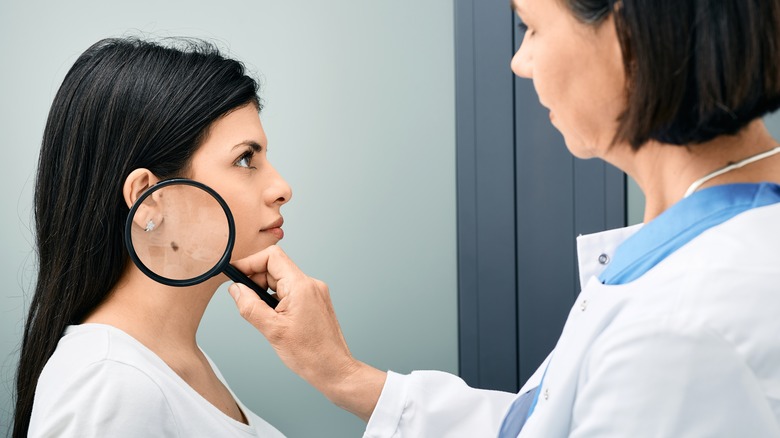Can Moles Come Back After Being Removed?
Moles — skin growths formed when pigment-forming cells in the body collect together — are common to most people, and most often harmless. They can vary in size, shape, and color. Some may be present at birth, while others may develop over time, says the Mayo Clinic.
However, some moles are cancerous growths, or can become so. Moles that are suspicious may have irregular borders, uneven coloring, or be larger than a pencil eraser. They may also change in size, shape, or color, which can be a sign of skin cancer. If your doctor suspects a mole is cancerous, they may recommend removing it for further evaluation. In some cases, moles might also be removed for cosmetic reasons.
Mole removal surgery is a common procedure that can be performed in an outpatient setting by a dermatologist, says the Cleveland Clinic. Removal options may include excision, shaving, or laser therapy. During the procedure, your dermatologist will numb the area around the mole with a local anesthetic to minimize any discomfort.
After a mole has been removed, it can grow back. In that case, it's important to monitor it regularly and have it checked by a dermatologist — this is especially important if you notice any changes in its appearance. A mole growing back does not necessarily mean that it is cancerous, and there may be various reasons why it returned. Continue reading as we explore those factors.
Why do some moles grow back after surgery?
It is possible for moles to grow back after removal — this can occur if some of the mole's tissue was not completely removed during the initial procedure, allowing it to regenerate, according to Spot Check Clinic. The likelihood of a mole growing back may also depend on the method of removal and the characteristics of the mole itself. For example, surgical excision typically removes the entire mole, including the cells beneath the skin's surface. As a result, the chances of the mole growing back after this procedure are relatively lower than other methods like shaving, says the Cleveland Clinic. Shaving involves using a scalpel to remove the mole's surface layer. This method isn't ideal for deeper layers and has a higher chance of the mole returning.
To minimize the chances of a mole growing back after removal, it's important to have the procedure performed by a qualified dermatologist and to follow their aftercare instructions carefully. Regular skin checks are also essential for maintaining skin health and catching potential issues early. If a mole returns, try to monitor it for any size, shape, or color changes, as this may be a sign of skin cancer. Your dermatologist might send a skin sample to a laboratory for evaluation. If the mole is found to be cancerous or precancerous, they may recommend further treatment.
Mole removal surgery aftercare
Your dermatologist or surgeon may provide specific instructions for caring for the wound and when to schedule a follow-up appointment. Be sure to follow these instructions carefully to promote proper healing and prevent complications. The Icahn School of Medicine at Mount Sinai explains that keeping the area clean and dry is important for the first 24-48 hours after the procedure. You should avoid getting the area wet. After this time, you can gently clean the area with soap and water, not scrubbing or rubbing the wound.
If your surgeon bandages the wound, they might advise you to change the bandage regularly. The Cleveland Clinic advises changing it daily. Direct sunlight can irritate the wound and increase the risk of scarring, so the Skin Clinic advises against exposing the affected area to sun exposure after the procedure. If you do need to go outside, always use sunscreen. Lastly, avoid picking at the scab or any skin around the wound. This may disrupt the healing process and increase the risk of scarring or infection. If you experience any signs of infection, such as redness, swelling, or fever, or have any concerns about the healing process, contact your dermatologist immediately.


